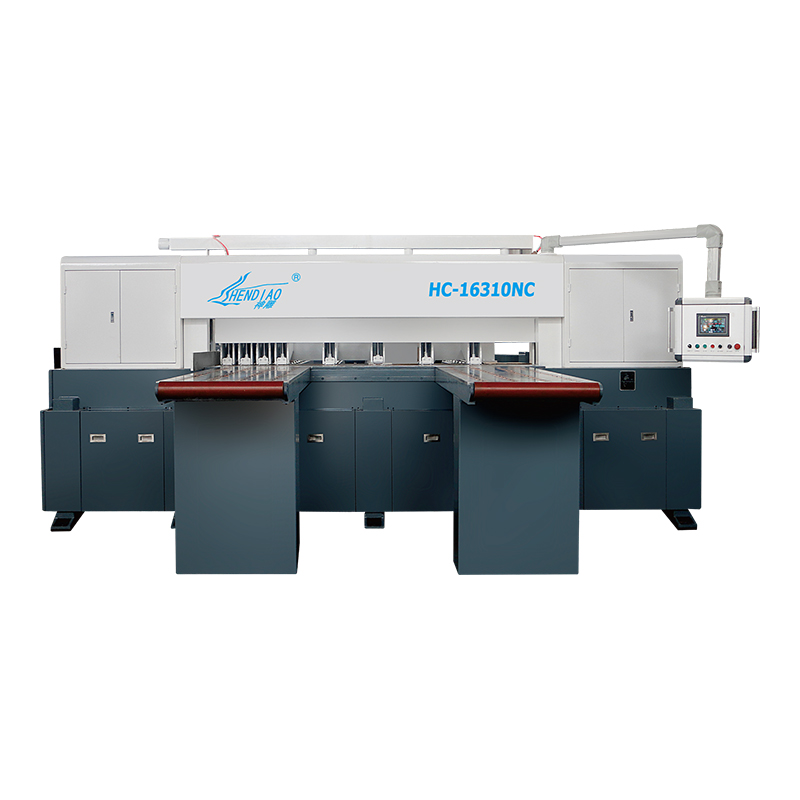NCJ-70 Servo Automatic Feeding High Speed Metal Circular Saw Machine
Cat:Hinged Circular Saw Machine
Servo Automatic Feeding High Speed Metal Circular Saw Machine is an ad...
See DetailsIntroduction: Why Stability Matters in Metal Cutting Operations
In industrial manufacturing, precision and repeatability are paramount. When cutting aluminum plates, even slight deviations in alignment, vibration, or blade movement can cause flawed products or machine damage. This is where the overall stability of the machine becomes a key performance indicator. Evaluating how stable an aluminum plate cutting circular saw machine remains over extended use is essential for ensuring productivity, accuracy, and operational safety.

Mechanical Structure and Build Quality
One of the primary contributors to machine stability is the structural design. High-quality machines are engineered using heavy-duty steel frames or cast iron bases, both of which provide the rigidity needed to decrease vibrations during operation. The stronger and more balanced the structure, the better it can handle the mechanical stress associated with cutting high-density aluminum, especially at high speeds. Reinforced legs, low center of gravity, and integrated support beams all help enhance operational stability.
Blade Balance and Motor Synchronization
Stability during cutting is also heavily influenced by how well the blade and motor are balanced. If the blade is even slightly imbalanced or if the motor generates uneven torque, this can cause oscillations that affect the cut quality. Premium machines include dynamically balanced blades and precisely tuned motor systems that operate in harmony. This synchronization decreases blade wobble and promotes consistent engagement with the aluminum material, even when cutting thick or dense plates.
Vibration Dampening and Isolation Features
Advanced saw machines are often equipped with vibration-damping technologies such as shock-absorbing mounts or rubber isolation pads. These components absorb mechanical energy that would otherwise cause the frame to shake or shift. In high-volume settings, where machines are expected to operate continuously, these features play a crucial role in maintaining smooth, stable performance. Some models even use dual motor drives or servo-controlled feed mechanisms to further reduce vibration during material movement.
Material Holding and Feed Consistency
No matter how stable the machine frame is, the material itself must also remain securely in place. Well-designed aluminum cutting machines include strong clamping systems, automatic material feeding rails, and anti-slip surfaces to ensure that the aluminum plate does not move during cutting. By securing the material effectively, the machine avoids disruptions that could cause jerky blade motions or uneven edges. Stable feeding directly supports high-precision output and contributes to long-term cutting accuracy.
Software and Feedback Control Systems
In modern CNC-enabled models, stability is enhanced through digital monitoring and control. These machines use real-time feedback to make small adjustments to blade speed, feed rate, and torque in response to detected resistance or temperature changes. This closed-loop system ensures smooth operation even as conditions change during extended runs. The result is greater machine reliability and cutting consistency across batches and time.
Long-Term Stability and Maintenance Factors
While initial stability is important, maintaining it over time is equally critical. Machines designed for industrial use often include self-lubricating components, auto-tensioning systems for belts, and durable bearings that reduce wear over time. With proper maintenance—such as regular cleaning, lubrication, and blade checks—a high-quality machine can retain its stability for many years, making it a dependable choice for any aluminum fabrication operation.
Conclusion: Engineered for Consistency and Control
The stability of an aluminum plate cutting circular saw machine is not the result of a single component but a carefully engineered integration of design, hardware, and software. From a rigid frame and balanced motor system to adaptive control technologies and secure material handling, every aspect contributes to the machine’s ability to deliver precise, reliable cuts over time. For manufacturers focused on quality and efficiency, choosing a machine known for its long-term stability is a strategic and cost-effective decision.